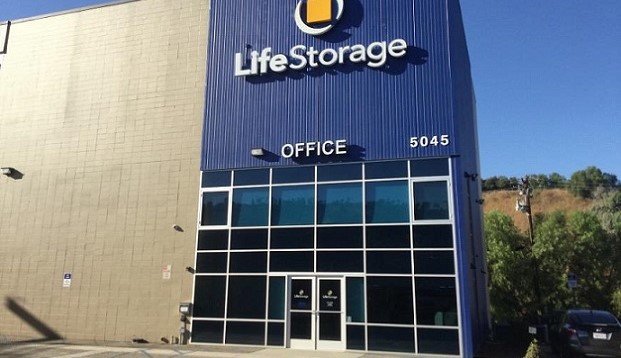
CHICAGO—The self-storage sector has become one of the most attractive investments in commercial real estate, outperforming most others in terms of revenue growth, but in the past few quarters it reached a plateau. Growth in occupancy and revenue has slowed for its major REITs, along with their stock prices. As a result, these companies have slowed down acquisitions. However, that has opened up opportunities for the many private investors that want to jump into the still-vibrant sector.
“Transaction volume is way down for the public companies,” Marc Boorstein, a principal with self-storage firm MJ Partners, tells GlobeSt.com. The Chicago-based company just published its latest analysis of the sector, and found that self-storage REITs such as Public Storage and Extra Space Storage generated same-store revenue growth in the second quarter ranging from 0.9% to 5.4%. Several years ago, the same figures ranged from around seven to nearly ten percent.
“The REITs are all near full occupancy,” Boorstein adds, the chief reason growth has slowed. In the past few years, each of big players brought in technology that tracks customers better and retains their business longer, things unaffordable to the thousands of mom-and-pop operators still in self-storage. Those high-tech tools boosted the REITs' occupancy from little more than 80%, and into the low- to mid-90s. in the third quarter, for example, Life Storage reported occupancy of 92.7%, a slight increase from one year ago, and Public Storage's rate was 94.5%, a slight decline.
It's not as if the big REITs have completely stopped acquiring new properties. Through the first nine months of 2017, Public Storage, which, with 2,374 locations is the largest provider, acquired another 14 properties consisting of 830,000 net rentable square feet for $81.7 million. Locations include three in OH, two each in FL, IN, NC and SC, and one each in KY, MN and NY.
And Public Storage also remains quite active on the development front. Currently, it has various facilities in development totaling 2.8 million rentable square feet, and estimated to cost $365 million. Furthermore, it also has expansion projects totaling 1.9 million rentable square feet underway with a cost estimate of an additional $235 million, for a total of about $600 million. Public Storage expects similar pipeline amounts continuing at least the next 12 to 18 months.
But that still leaves a question hanging over the four other big REITs. How will Extra Space Storage, CubeSmart, Life Storage and National Storage Affiliates, keep growing? “I think they will start acquiring again,” says Boorstein. But most likely, the storage firms will team up with joint venture partners to acquire and develop new facilities.
That strategy solves two problems, he adds. For the REITs, it spreads out the risk involved in new development or acquisitions. And it allows investors to pair up with companies that have the proven ability to maximize the income from a given location.
“There is still plenty of capital for development and acquisitions,” says Boorstein.

CHICAGO—The self-storage sector has become one of the most attractive investments in commercial real estate, outperforming most others in terms of revenue growth, but in the past few quarters it reached a plateau. Growth in occupancy and revenue has slowed for its major REITs, along with their stock prices. As a result, these companies have slowed down acquisitions. However, that has opened up opportunities for the many private investors that want to jump into the still-vibrant sector.
“Transaction volume is way down for the public companies,” Marc Boorstein, a principal with self-storage firm MJ Partners, tells GlobeSt.com. The Chicago-based company just published its latest analysis of the sector, and found that self-storage REITs such as
“The REITs are all near full occupancy,” Boorstein adds, the chief reason growth has slowed. In the past few years, each of big players brought in technology that tracks customers better and retains their business longer, things unaffordable to the thousands of mom-and-pop operators still in self-storage. Those high-tech tools boosted the REITs' occupancy from little more than 80%, and into the low- to mid-90s. in the third quarter, for example, Life Storage reported occupancy of 92.7%, a slight increase from one year ago, and
It's not as if the big REITs have completely stopped acquiring new properties. Through the first nine months of 2017,
And
But that still leaves a question hanging over the four other big REITs. How will Extra Space Storage, CubeSmart, Life Storage and National Storage Affiliates, keep growing? “I think they will start acquiring again,” says Boorstein. But most likely, the storage firms will team up with joint venture partners to acquire and develop new facilities.
That strategy solves two problems, he adds. For the REITs, it spreads out the risk involved in new development or acquisitions. And it allows investors to pair up with companies that have the proven ability to maximize the income from a given location.
“There is still plenty of capital for development and acquisitions,” says Boorstein.
© 2025 ALM Global, LLC, All Rights Reserved. Request academic re-use from www.copyright.com. All other uses, submit a request to [email protected]. For more information visit Asset & Logo Licensing.








